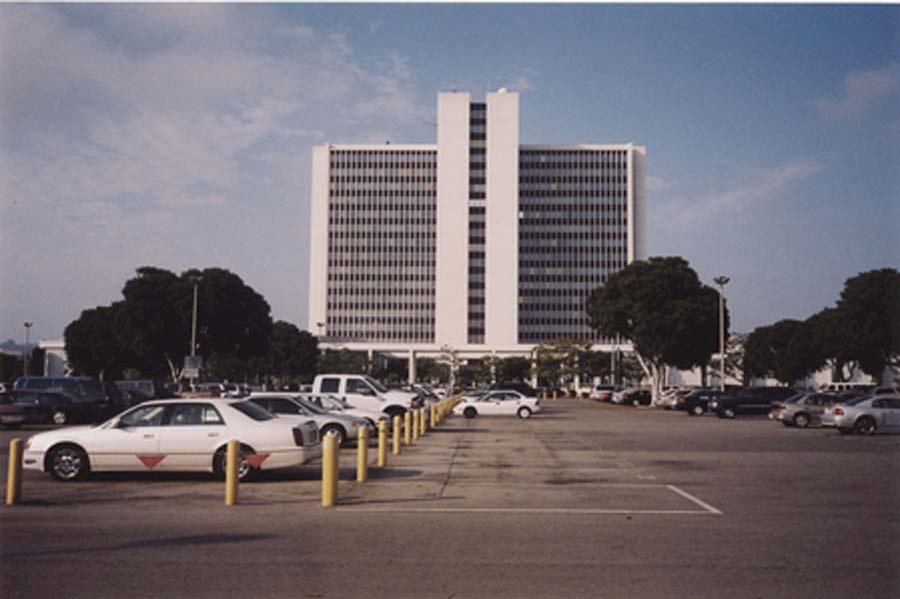Galerie Hubert Winter
Mary Ellen Carroll, FEDERAL (Watch the Watchers.™) (2003)
24-hour movie for two cinemas,
<p>Worldpremier of <em>FEDERAL (Watch the Watchers.™)</em><br />
Wendesday, 16th of June 2004 at 9a.m.<br />
TOP Kino , Rahlgasse 1, 1060 Vienna , Austria in collaboration with Galerie Hubert Winter, Vienna</p>
<p>The title for the project is derived from The Federal Building, located at 11000 Wilshire in Los Angeles, designed by the architect Charles Luckman in 1969. Luckman returned to architecture following his successful business career as the CEO of Lever Brothers, where he was inspired by commissioning Skidmore, Owings, and Merril (SOM) to design the Lever House building. The Federal Building has been referred to in architectural guidebooks as the embodiment of bureaucracy. Mary Ellen Carrolls project acknowledges both Andy Warhols <em>Empire</em> and Toni Negris popular book <em>Empire</em>, but it is not a film about the building as celebrated icon, nor is it an interpretation of an au courant political theory. Instead, <em>FEDERAL (Watch the Watchers.™)</em> is the articulation of an image of what is presently legally, socially and politically non-representable.<br />
United States national security in the post-911 socio-political landscape focuses on surveillance and counter-surveillance, observing the need to protect these symbols of the Federal government ’s authority and the public ’s access to them. Over a period of several months Carroll accumulated a labyrinth of bureaucratic paperwork and media attention in order to gain permission to document the structure in this prolonged manner.The building houses divisions of the Department of Veterans Affairs, the State Department, the FBI, and the CIA; its documentation turns these high-level government agencies from the watchers to the watched.<br />
Screening simultaneously in two theatres over 24 consecutive hours, <em>FEDERAL (Watch the Watchers.™)</em> evokes minimalism ’s reductive qualities, stripping away the affect of bureaucratic authority through the insistence of repetition, and exposing the process of its realization through the accompanying unedited ambient soundtrack.On one screen, the north facade is viewed from the LA National Cemetery and on the other, the south façade is viewed from the rear of the building ’s parking lot. At various points in the screening the viewer ’s perception of the building and its surroundings morphs into differing typologies, upending the conceptual trope that has been exhausted by the now overly-familiar legacy of the school of ‘German photography“. Given a chance to watch the movie from either of the two halves gives the appearance of a freedom of choice, yet in the end mirrors the same set of restrictions that go unnoticed in the public domain.</p>
